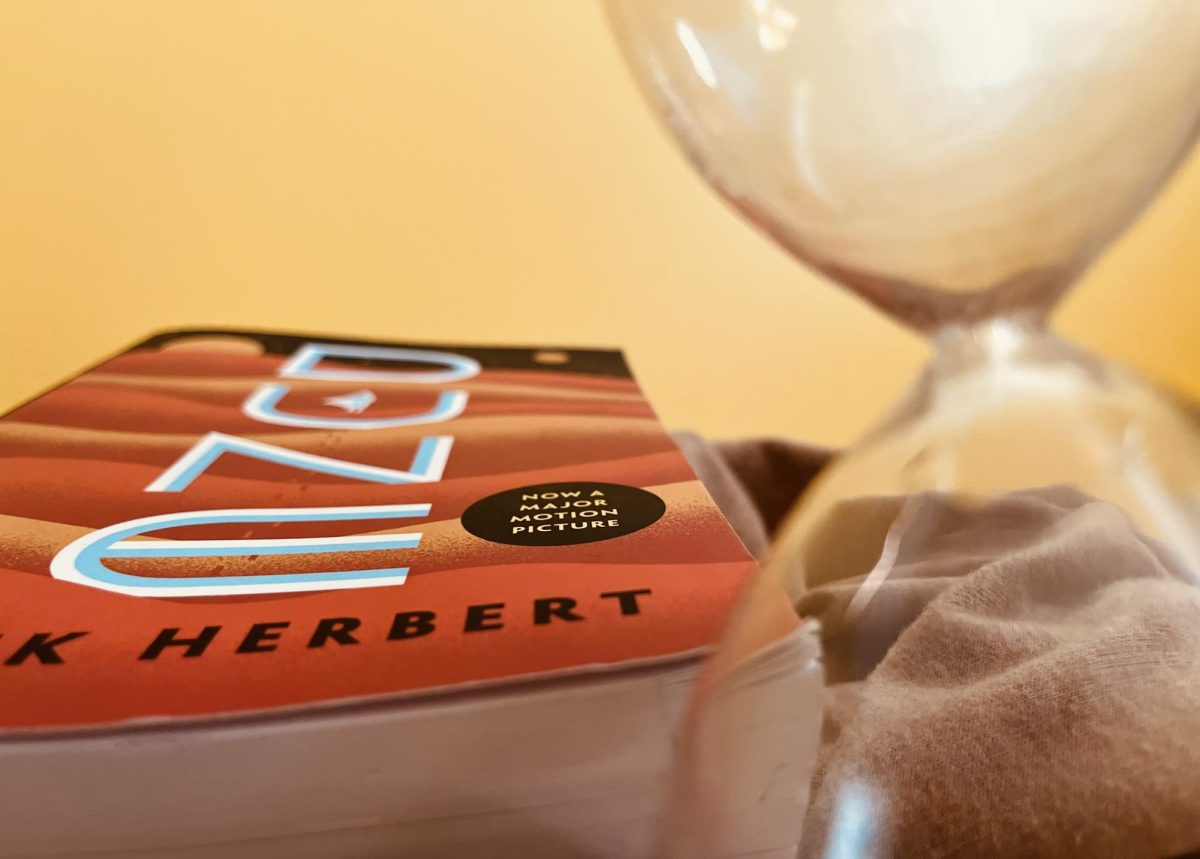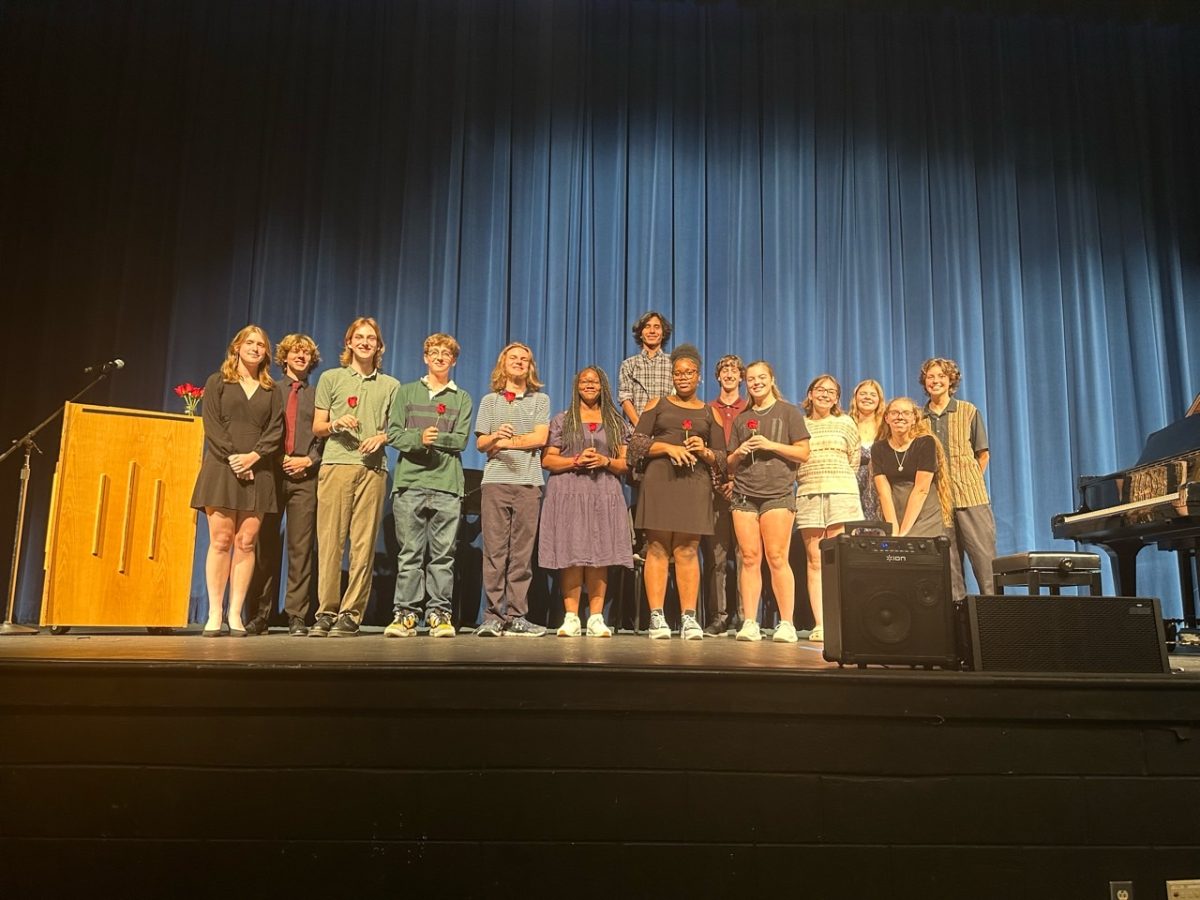The theater lights, while previously a warm hue in the crowded theater, presently dimmed. The audience, pressing in on one another, waited with scarcely a breath. They were still and silent, almost like the individuals in the movie they had come to see. Their fixated hush embodied the fremen, quiet sand-whisperers who traversed the dunes, allowing the desert only a slight knowledge of their presence. This, the long awaited sequel to the critically acclaimed movie “Dune: Part One”, left them rapt in anticipation as the screen flared to life.
Perhaps that describes the atmosphere of the theater on March 1, 2024, the opening day of “Dune: Part Two”. However, when I went to see it the next day, I was waiting in the theater for my friends, the Necheporenkos, to arrive. As the beginning scene blazed across the screen, they came and settled into their seats. Thus marked the beginning of a more than two and a half hour movie.
Sasha and Ivan Necheporenko are from Ukraine, and have been living in the United States for nearly two years alongside their parents and brother. Sasha has been learning English for about 13 years in English classes, “…but since moving to the USA I have been using spoken English more often.” One thing that has helped her is having been exposed to American movies, and she explains, “American media has helped [me] to be more familiar with the way of life here. Even though it is not always portrayed very realistically, it certainly is better than coming in ‘blind’.”
Sasha and I found similar interests in cinematography, specifically the newest “Dune” movies. Sasha first encountered “Dune” through the book, which was written by Frank Herbert and published in 1965. The sci-fi novel caught the general populus’s attention, and many people tried to bring the book to life. The first attempt that made it to screen was by David Lynch, and the 1984 “Dune” movie opened on Dec. 14. The results from the movie, specifically the box office, were underwhelming. Lynch himself describes his adaptation of the story to the screen as a “huge sadness in my life” (Film Cred).
Since then, Denis Villeneuve was selected to direct the makings of another “Dune” movie, starting the story from the beginning of the book to try and give it the visual presentation that it deserves. “Dune: Part One”, encompassing all of Book I and less than half of Book II in the novel, released in 2021. It did much better than Lynch’s version, receiving a box office of $368.1 million worldwide (Film Cred). In fact, Dune did so well that it was well-recognized in not only America, but other nations, such as Ukraine, as well.
Sasha describes the influence of American media as “international”. Specific to Ukraine, she says that American media, “was and still is big on the movie scene in Ukraine. I think ever since the big boom of streaming services like Netflix coming to Ukraine, it became more prominent. Though lately, Netflix (and other streaming services) did start to add and produce more international content.”
The international media Sasha describes consists of, but is not limited to, “Dune: Part One”. Sasha was first introduced to the universe of “Dune” through the book. However, she says, “I tried to read it, but the wording seemed unusual.” In an effort to continue the story, she ended up reading the illustrated version of Dune by Sam Weber. After that, she watched the first movie when it came out, immediately getting drawn in because, “It was a breath of fresh air after what can be viewed as a “Marvel” or superhero fatigue.” She references Avengers: Endgame, and COVID-19, saying that after those experiences “…seeing Dune in the cinema was refreshing. The subtle use of CGI, with earth-toned colors, the slow (a thing a lot of modern movies and TV shows tend to disregard) development of the plot, this new unknown world of desert! It captured my attention and got me interested in the story…” Thrilled by the prospect, she then watched the movie a couple more times. Her opinion on the uniqueness of the movie remained the same, unaltered by any movie fatigue that some people experience after watching the same film over and over again. She says, “I was amazed by Denis Villeneuve’s cinematography and the overall look of the film.”
After seeing “Dune: Part One”, Sasha read the first part of the book but decided to wait for “Dune: Part Two” so she could watch it before finishing the book. “Seeing how complex the book was compared to the movie plot, I did not want to spoil the second movie with the constant comparison.” Now that she has seen the second movie, which was released on March 1 because of the writer’s strike, she has a lot to say.
Before going further, some terms have to be cleared up. The Fremen are people who live in the “uninhabitable” desert of Arrakis, a planet consisting of dunes everywhere the eye can see, and subsequently very little water. The main character, Paul, and his mother, Lady Jessica, fled to the desert after their family clan (house Atreides) was massacred by the Harkonnens. The Harkonnens are a different house, convinced that they obliterated house Atreides. Now, they are set on ruling Arrakis and getting rid of the Fremen, especially Muad’Dib, the new Fremen prophet who is causing a lot of trouble (little do they know, this messiah is Paul).
The second movie featured a lot of fighting scenes between the Fremen and the Harkonnens. It covered the rest of Book II and all of Book III from the original book. “The buildup was good but felt a bit rushed. In the second movie, there was a lot going on… but because of the lack of long focus on any event in particular, it was hard to grasp the linking thread at times,” Sasha explains, adding that there were so many battles that the war in the end didn’t have as much impact. “In the first movie, the death of the Duke, Paul’s father, and then the slaughtering of the House of Atreides was heartbreaking because throughout the film the viewer had established a connection with those characters. Whereas in the second part, everything is moving so fast and so cut that by the end of it, you even feel less connected to Paul, as he becomes almost invincible,” Sasha continues.
Even though the second movie wasn’t “flowy”, as Sasha describes the first one, she still appreciated it overall. “The cinematography was beautiful, the acting was good, and it was definitely more action-filled compared to the previous one.” Speaking of the acting, the cast of the movies had many cinematic stars, and Sasha says, “I am more familiar with the works of Zendaya, Timothee Chalamet, and Florence Pugh.” Austin Butler was also in the movies as one of the lead Harkonnen characters and Sasha says that with him “…being everywhere in the last 2 years, since Elvis came out, [Dune] is fun to observe.” This, along with other well-known actors and actresses being transformed to fit their roles in the movies, leads Sasha to exclaim, “…the makeup is crazy!”
In the book and the movies, most of the characters have unique traits that make them memorable. Sasha’s favorite character in the first movie was Paul because, “Seeing him go from this teenage boy living in a castle to the desert fighter and the leader of the opposition was a great journey.” Meaning, the expedition through his hard life, and his transformation because of it, drew her in. In a similar way, particularly the journey aspect of Paul’s character arc, American media (the “Dune” the book and the movies in particular) has traveled around the world, impacting everyone it touches and offering a bond between passionate movie-goers and bookworms alike.
Although there was a lot going on in the movie, some good things and some rushed aspects, Sasha acknowledges that it “…seems like the book might have even more [going on].” However, this doesn’t deter her, and she exclaims, “Now that I’ve seen the second movie, [I] can’t wait to finish the book!”






